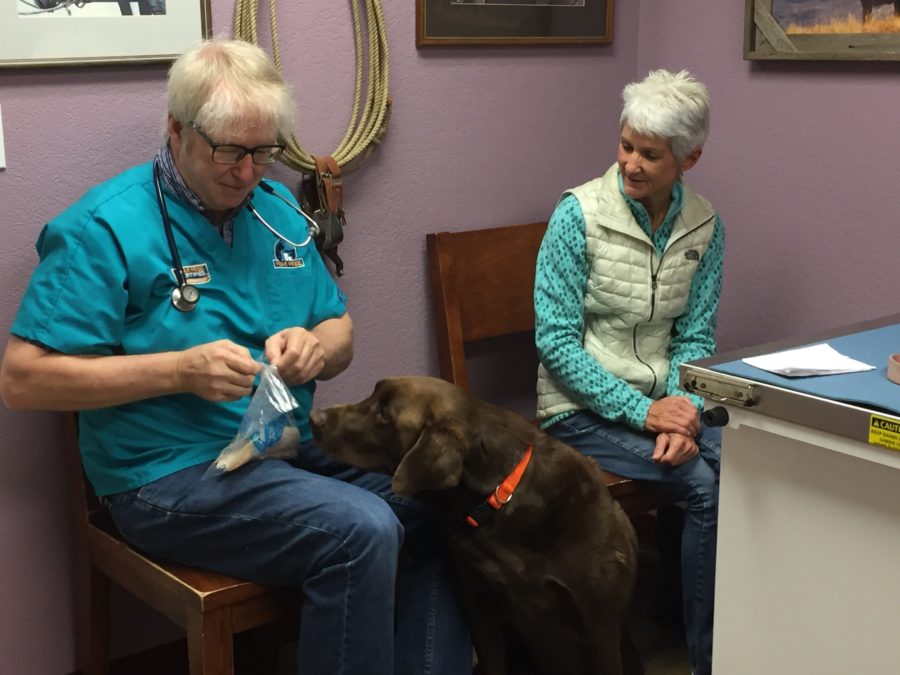
It’s crucial to use “the good stuff” when it comes to treating effectively and gaining a pet’s keen appetitive interest in the face of distractions and change that are beyond a pet’s comfort zone, as happens when they are removed from the comfort of home and taken into the veterinary hospital environment.
Many Fear Free Certified Professionals have their own “tricks of the treats” to persuade even the most finicky of pets to chow down and lick their lips. Dr. Marty Becker, founder of Fear Free and a Fear Free Certified Professional himself, is rarely in the exam room without a ready supply of top-shelf treats that he and his team generously hand out as pleasant distractions and high-currency mood boosters to help deliver a more optimal emotional experience for pets during veterinary healthcare.
Here are his top 10 pet-preferred treats for Fear Free veterinary care.
For Dogs
– Baby shrimp
– Beggin Strips (broken into tiny pieces)
– Canned salmon or tuna
– Warm deli turkey
– Easy Cheese Cheddar & Bacon
– Freeze-dried meats from Pure Bites
– Honey Nut Cheerios
– Kong Squeezable Peanut Butter
– Peanut Butter Captain Crunch
– Slices of turkey hot dogs
For Cats
– Albacore tuna or salmon
– Anchovy paste
– Baby shrimp
– Bonita fish flakes
– Easy Cheese Cheddar & Bacon
– Fancy Feast: Foil packs of any flavor
– Green olives
– Marshmallows
– Vegemite
– Whipped cream
Dr. Becker and the team at North Idaho Animal Hospital pay special attention to economical means of delivering tasty treats by ordering many of the above options in bulk for a lower price. They keep treats fresh and easy to pull out for individual patients by dividing the bulk size into smaller portions when possible, placing them into small, treat-size Ziplock bags and storing in a refrigerator or freezer until needed. The team will pull out treat options from the freezer to thaw in the fridge overnight. Warming the contents in a microwave-safe container for 7 to 10 seconds prior to the exam releases fragrant aromas and heightens flavors.
Pets with allergies and other special dietary needs receive treats specially chosen treats. Oftentimes the owner will bring in a pet’s favorite treats, such as blueberries, apple pieces, or green beans. An alternative is to warm the pet’s regular hypoallergenic food or treats in the microwave to enhance scent and flavor. A canned version of the pet’s regular food or a compatible alternative soft food and treats can be delivered through means of a food-dispensing toy. Or fill small paper cups with dilute beef bouillon or tuna juice and freeze to make a long-lasting popsicle the pet can lick. Remember, pets are coming in hungry, so even their regular food warmed up can seem like manna from heaven.
Deliver tiny tastes or portions. The pet may receive dozens of treats or continuous licks of a treat during the exam, but their appetite is maintained through small amounts (think Cheerio-size or smaller) or slow delivery methods such as from a food puzzle.
How do Dr. Becker’s favorite Fear Free treats stack up with your own go-to treats? What would you add to the list?
This article was reviewed/edited by board-certified veterinary behaviorist Dr. Kenneth Martin and/or veterinary technician specialist in behavior Debbie Martin, LVT.
Mikkel Becker is the lead animal trainer for Fear Free Pets. She is a certified behavior consultant and trainer who specializes in reward-based training that’s partnered closely with the pet’s veterinary team. Mikkel is the co-author of six books, including From Fearful to Fear Free.
